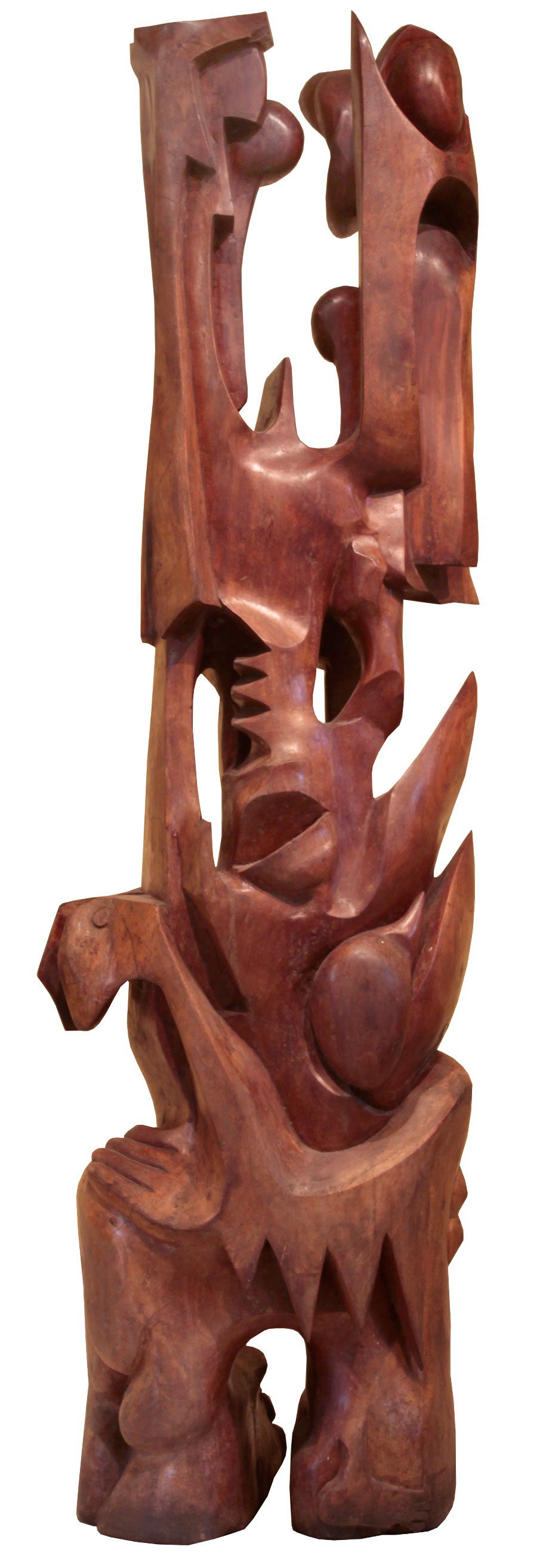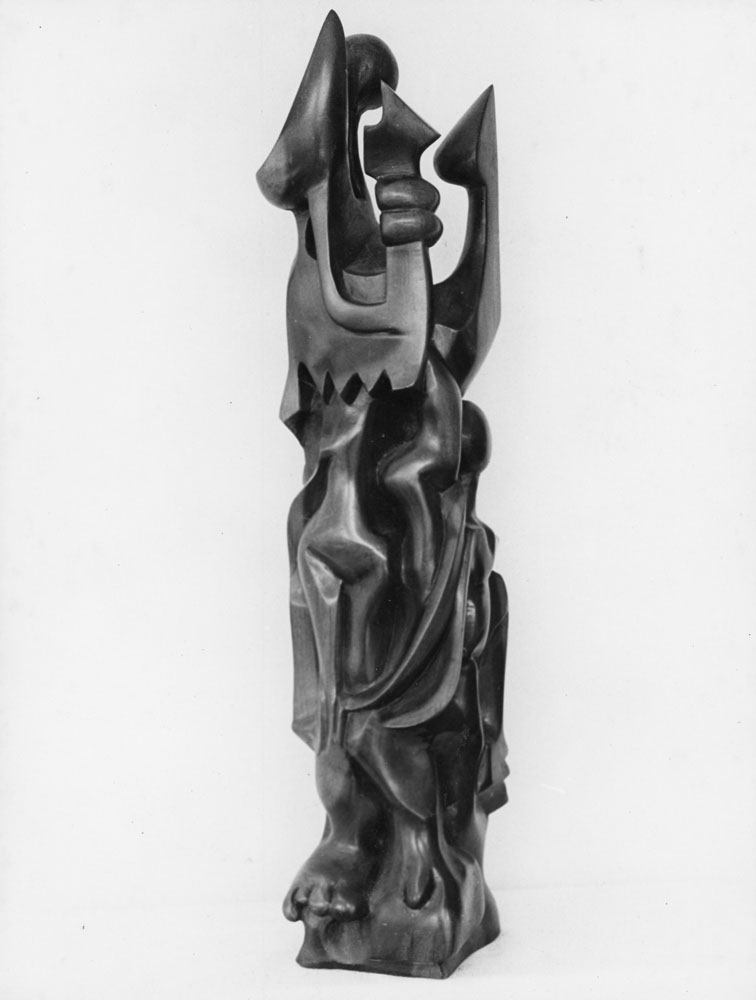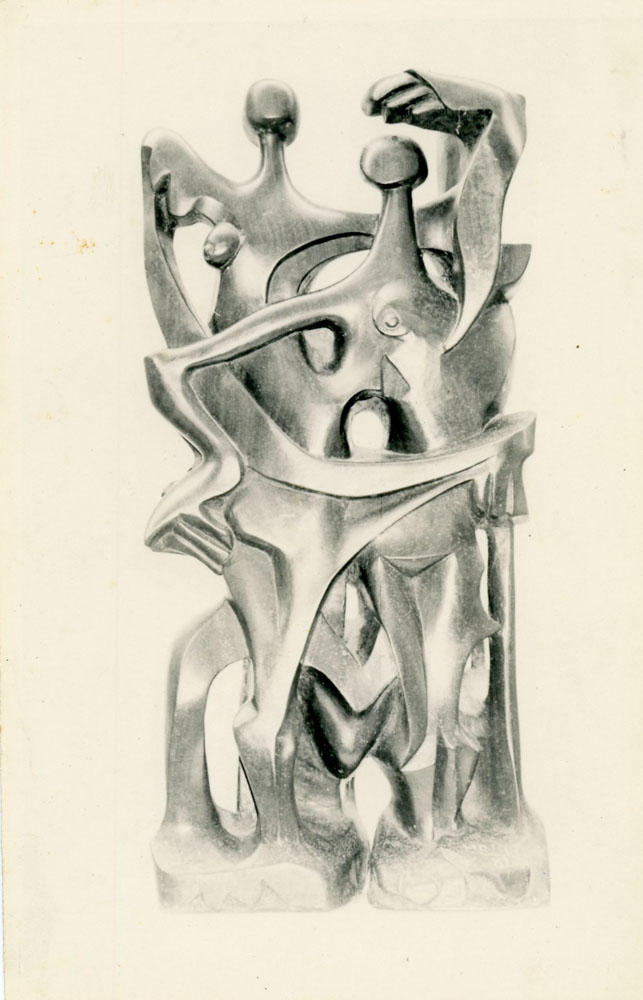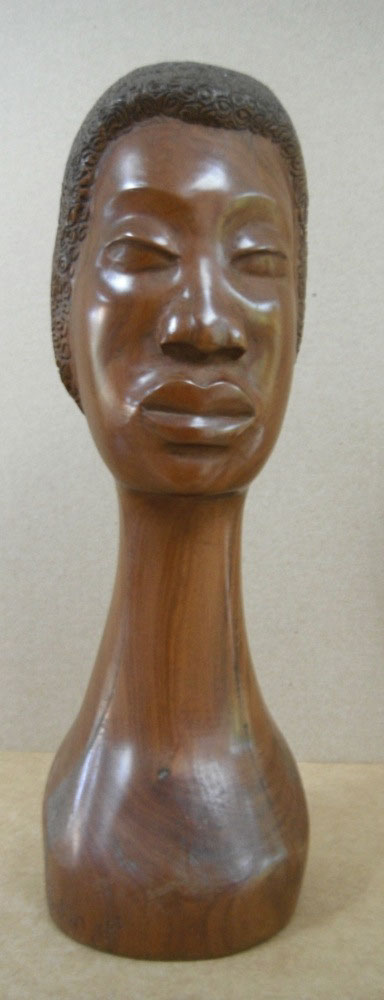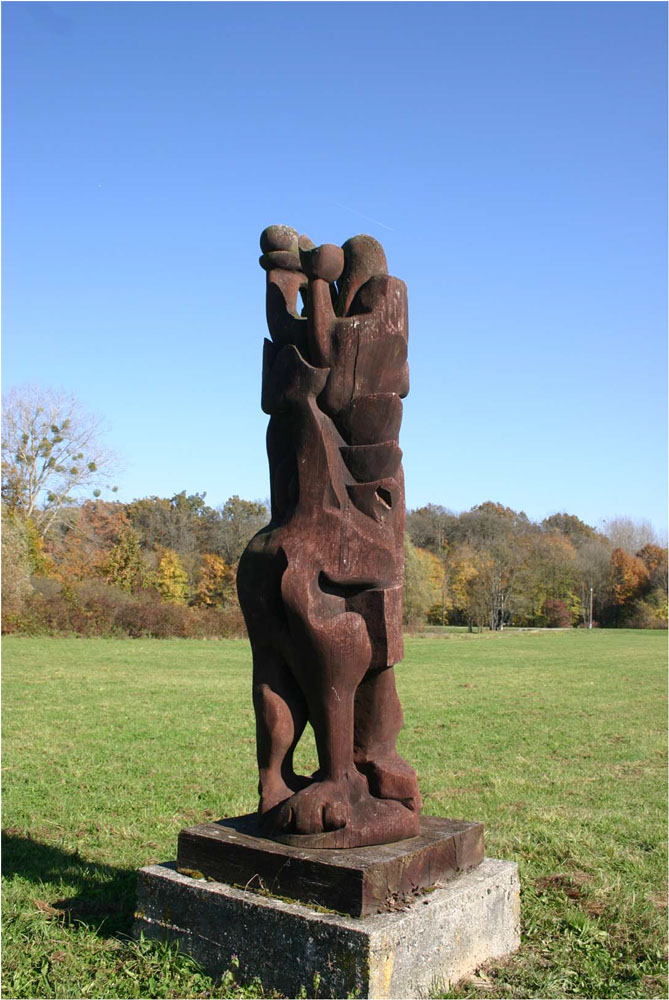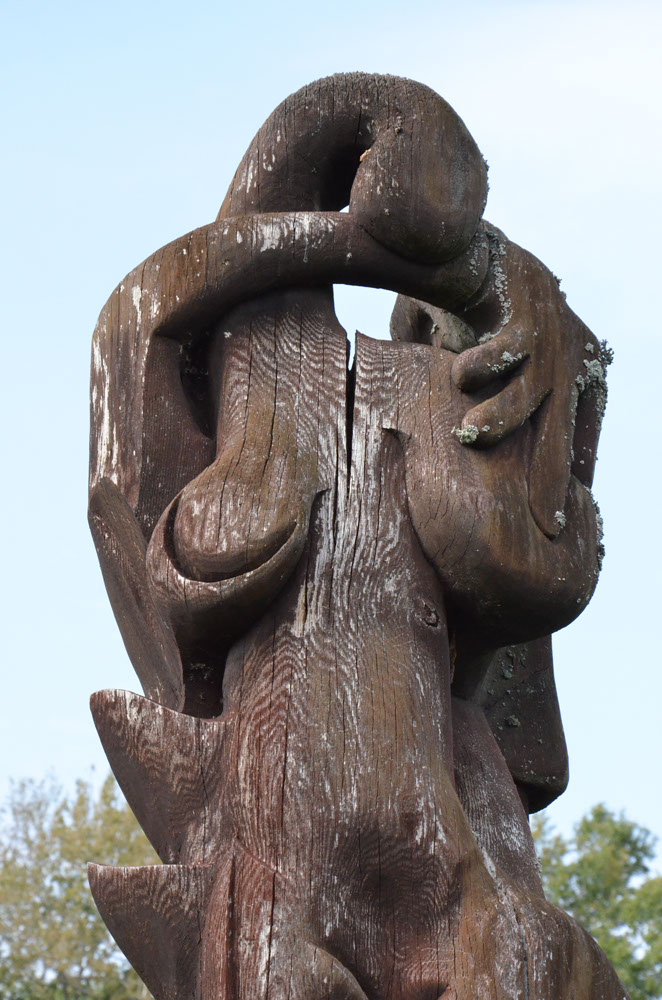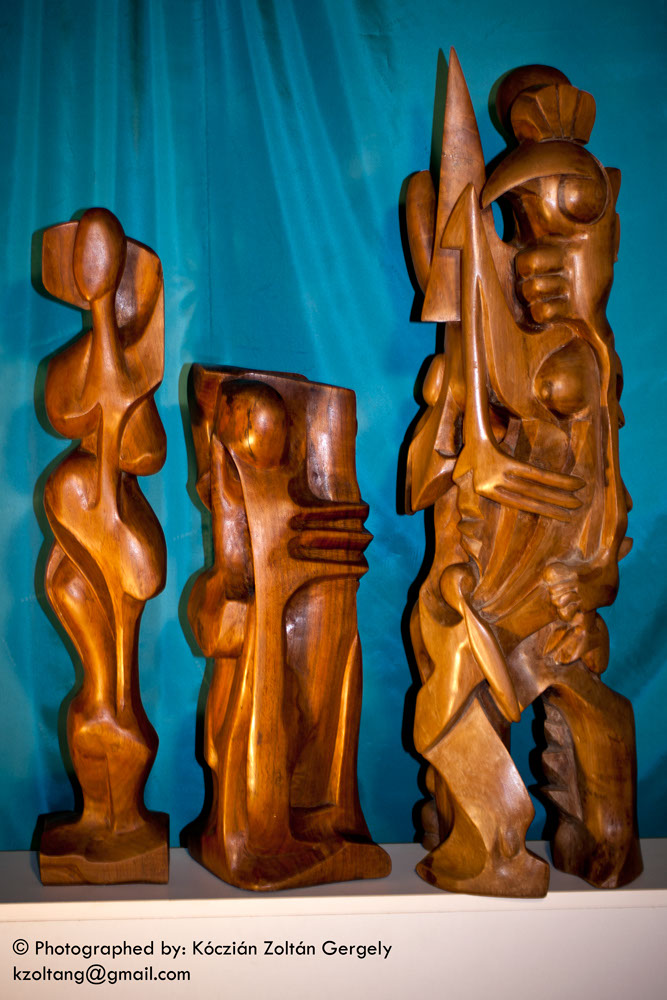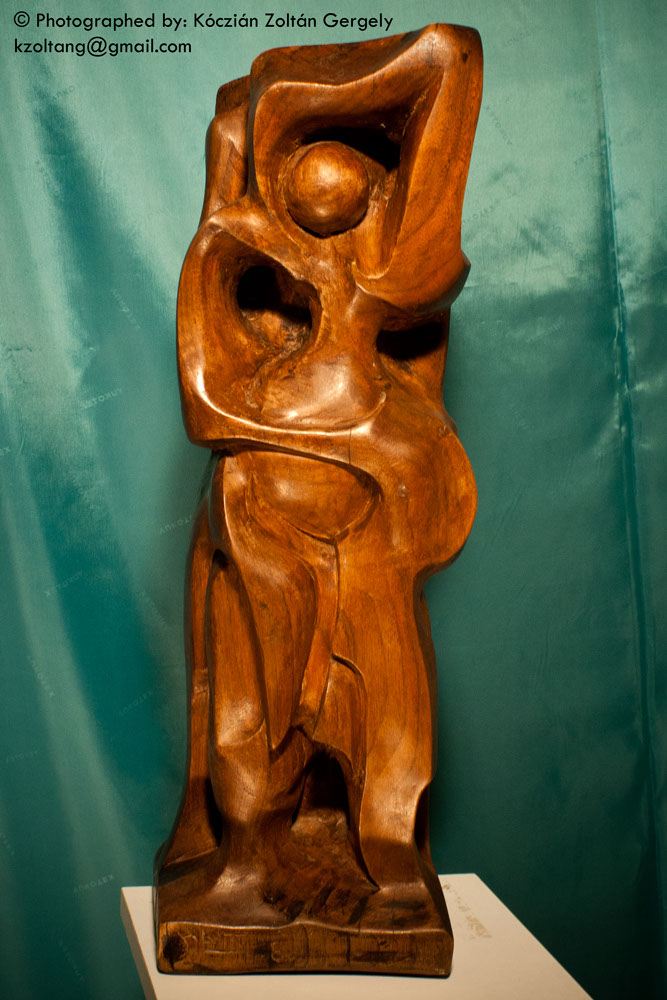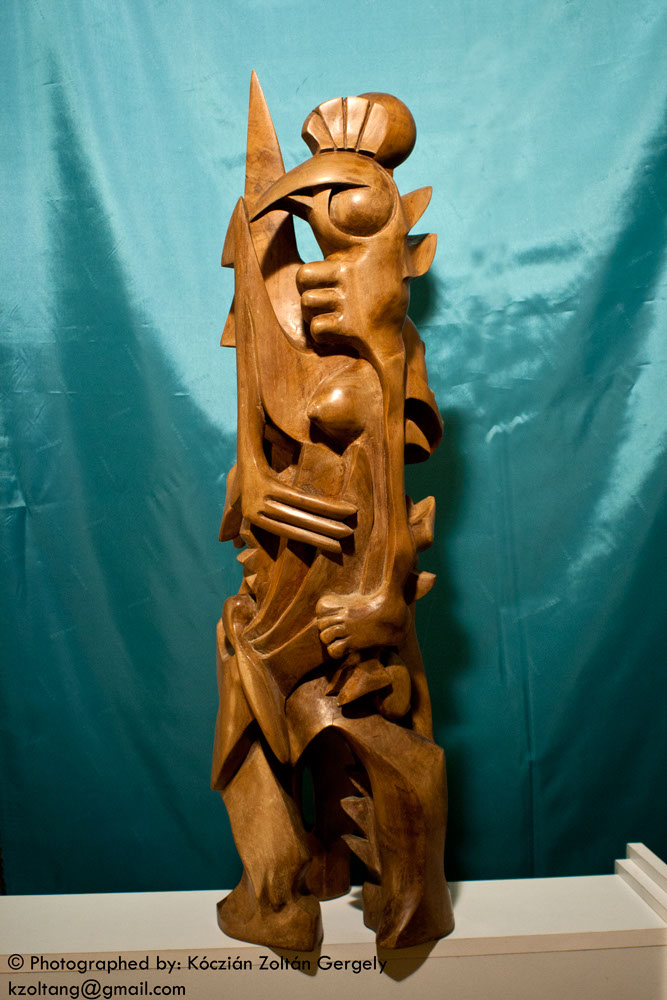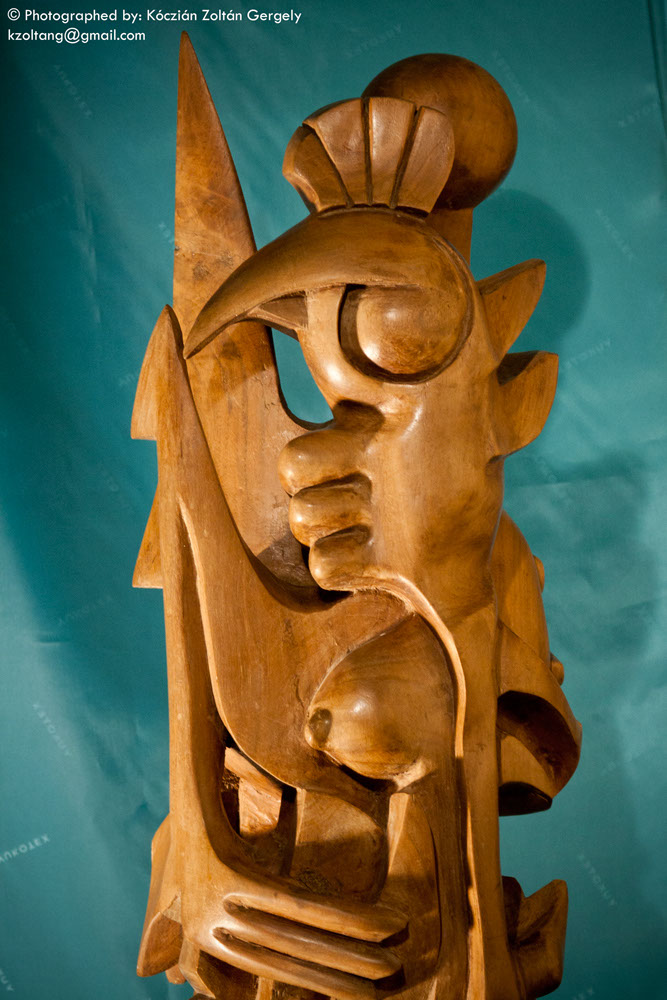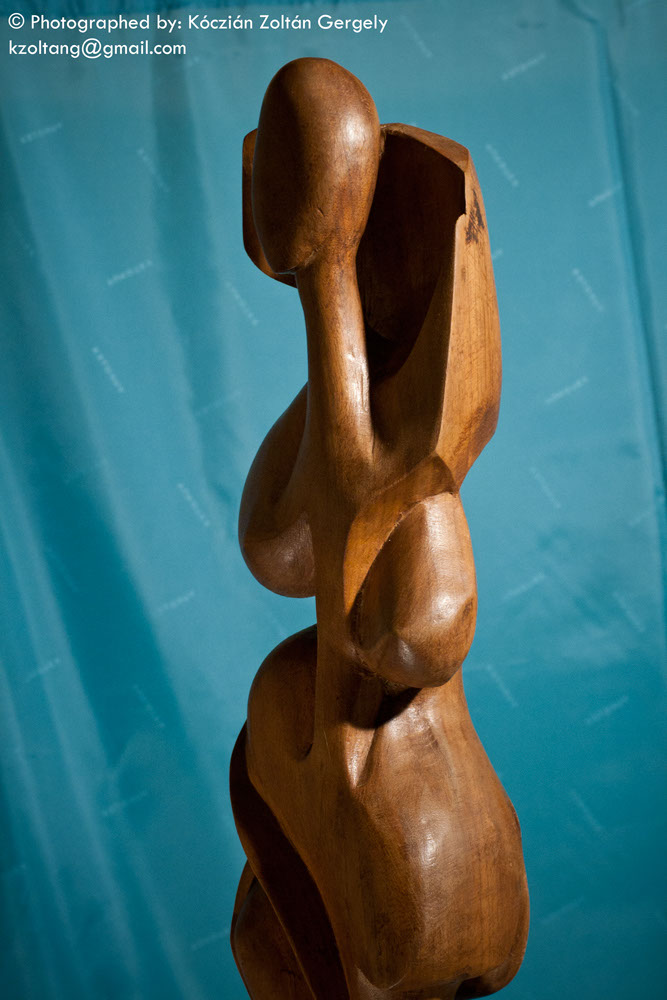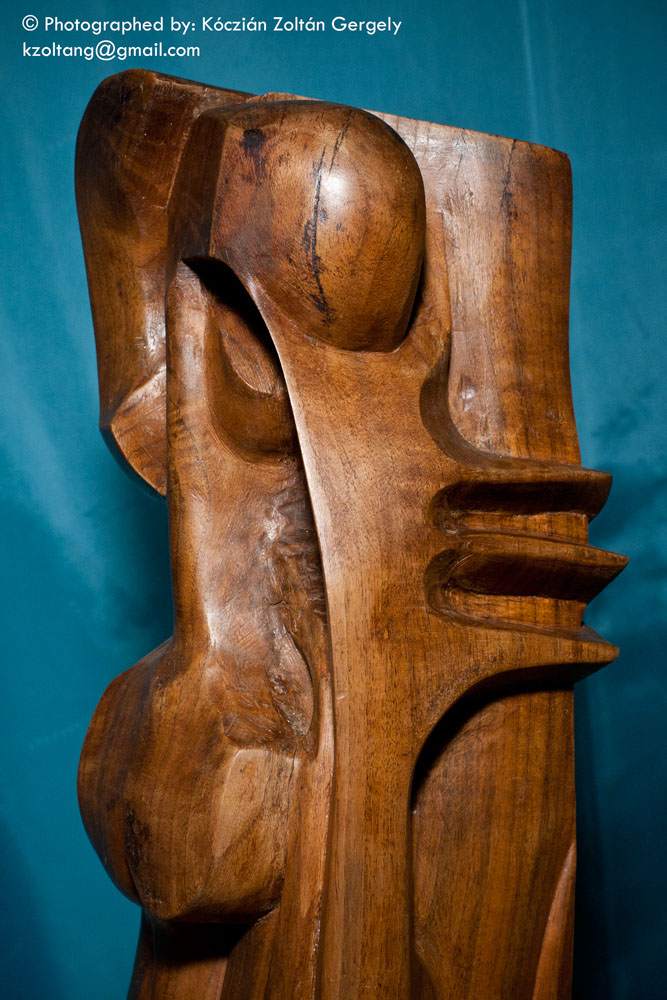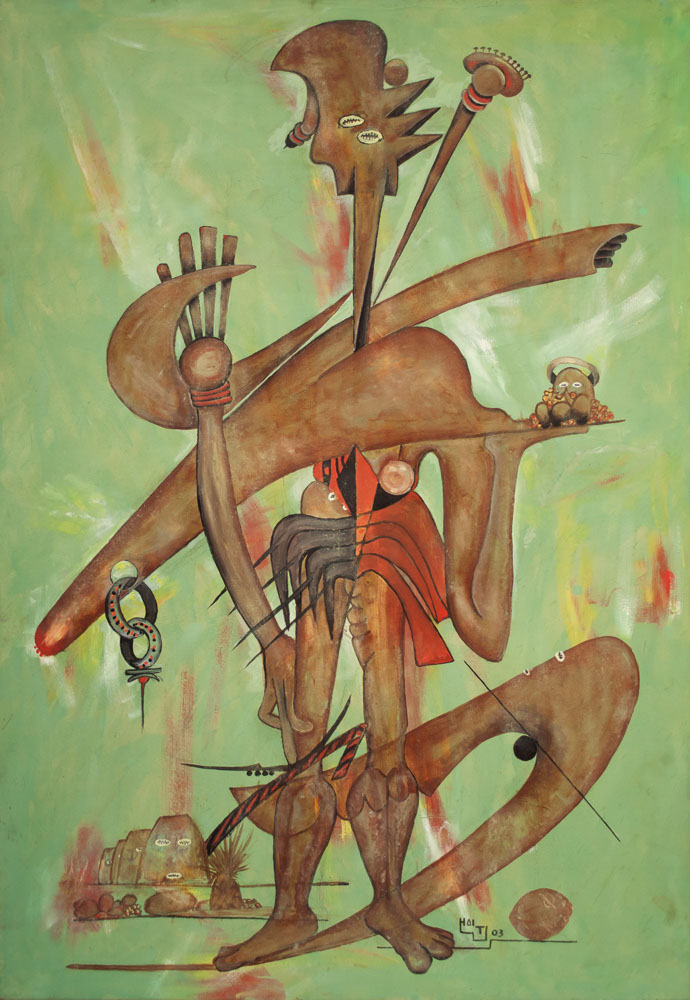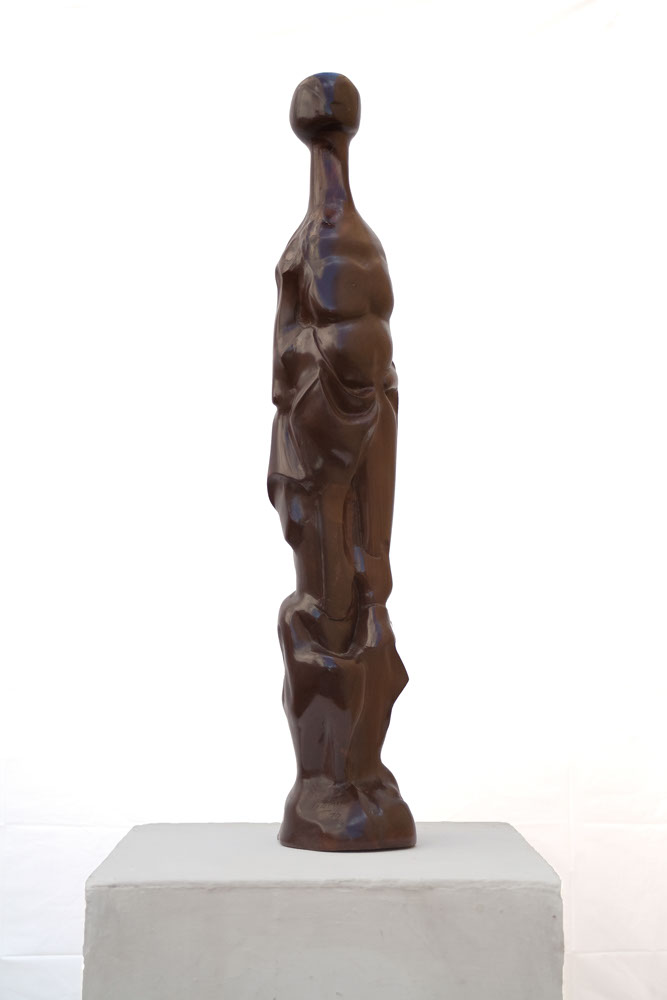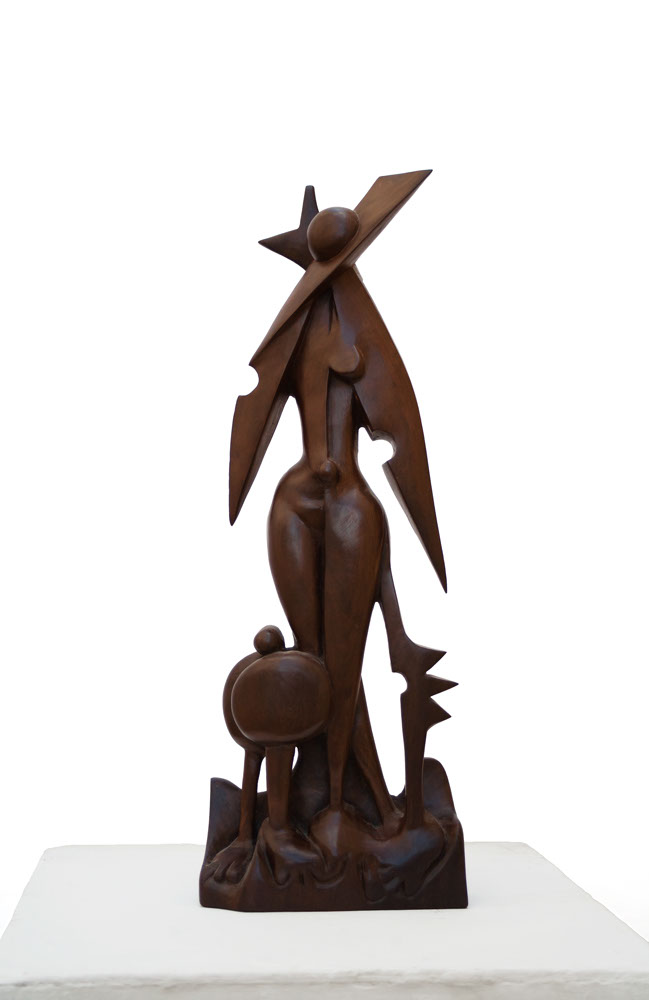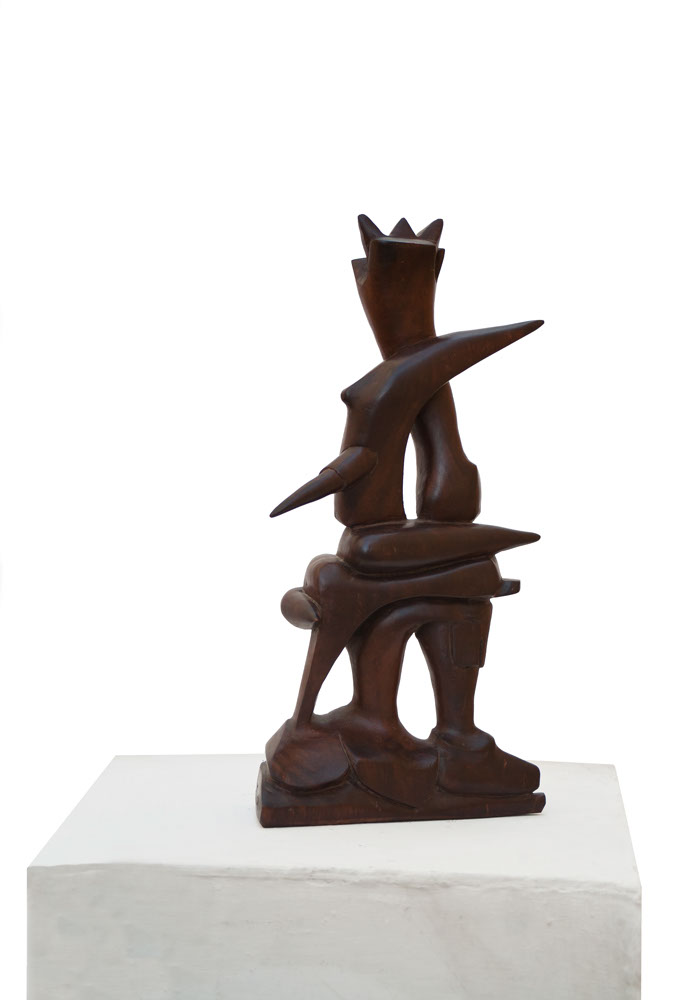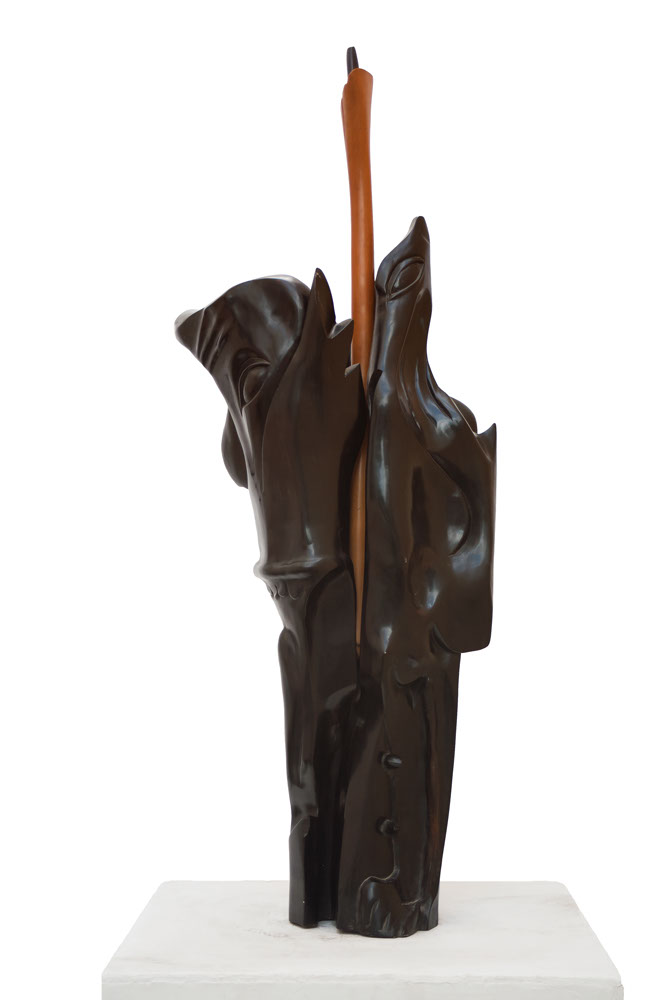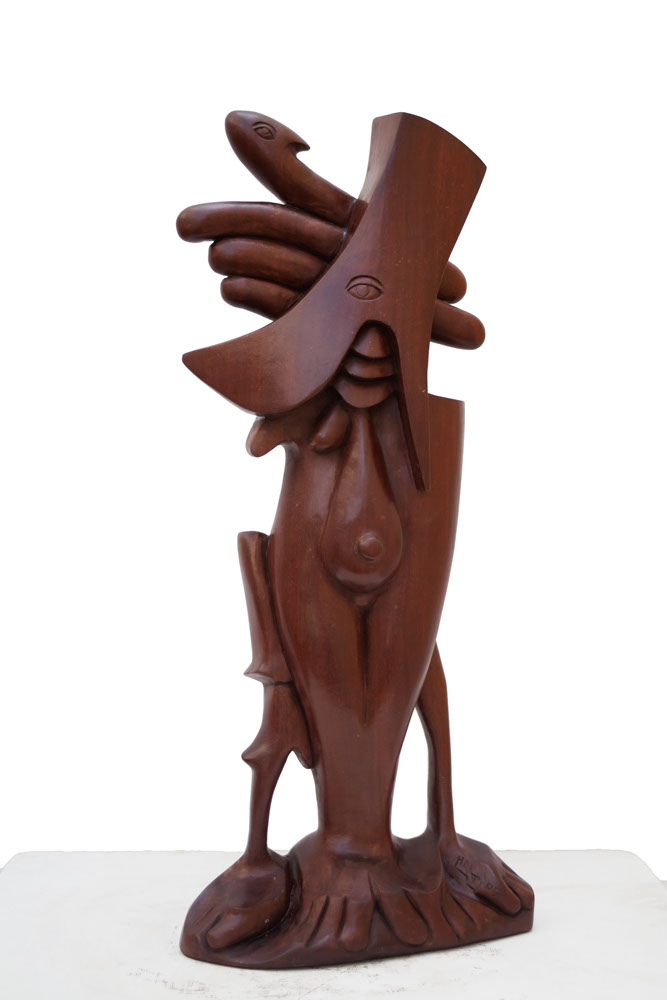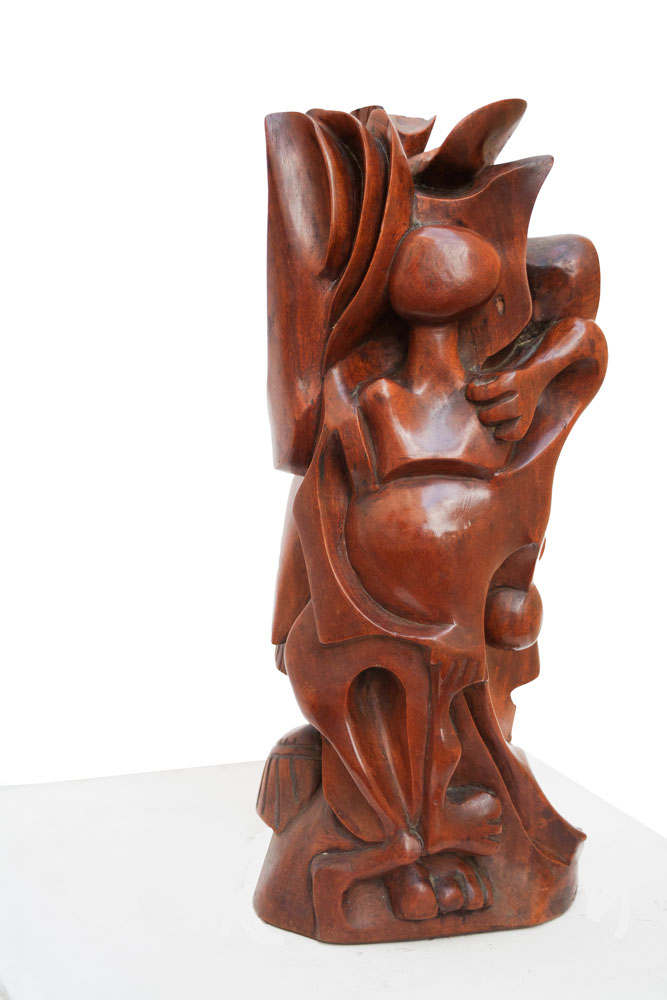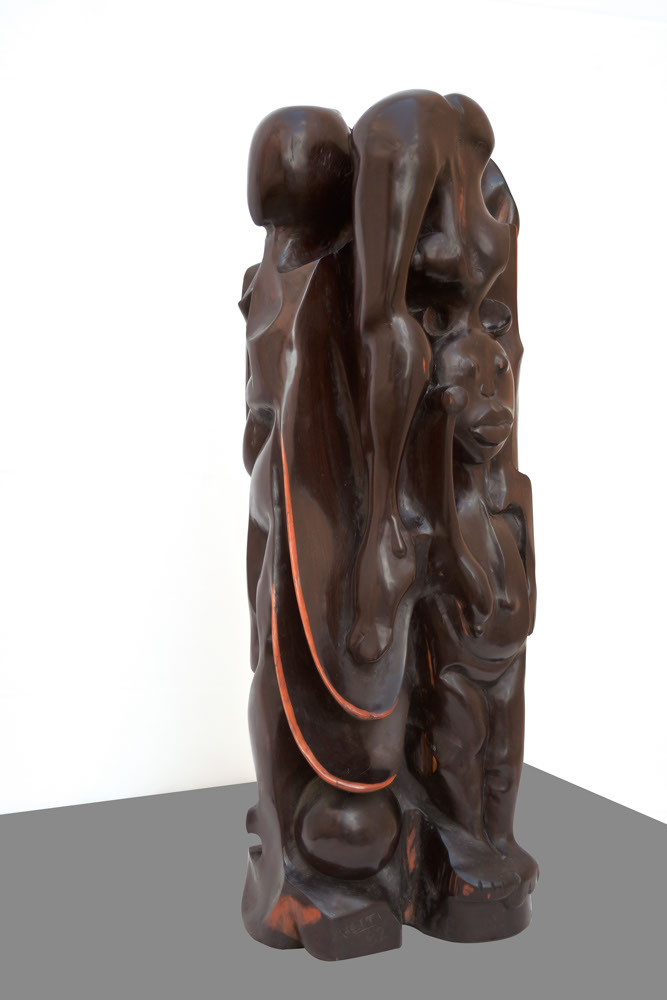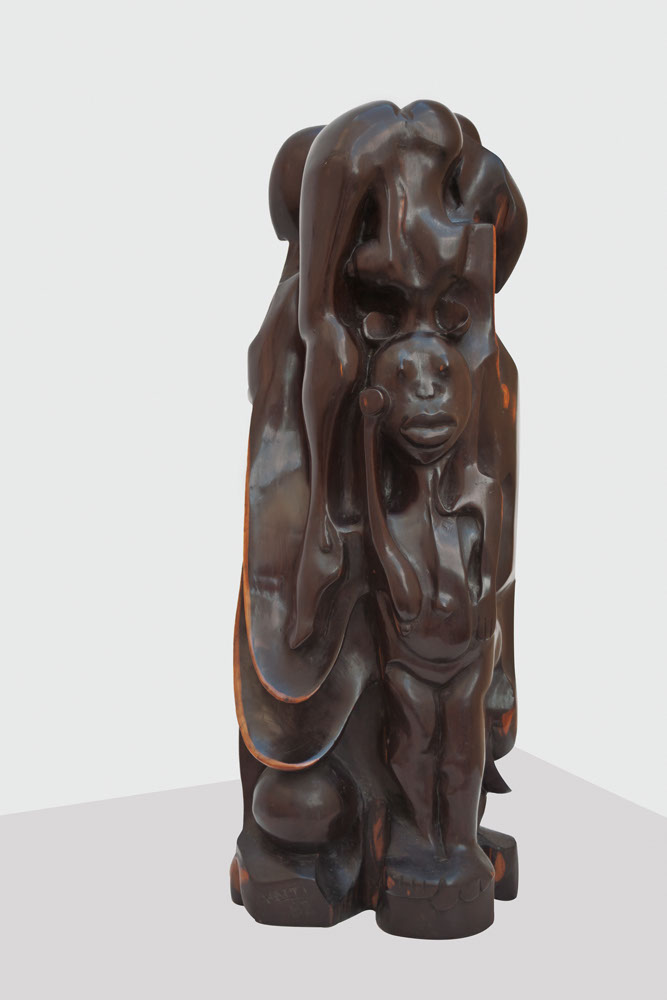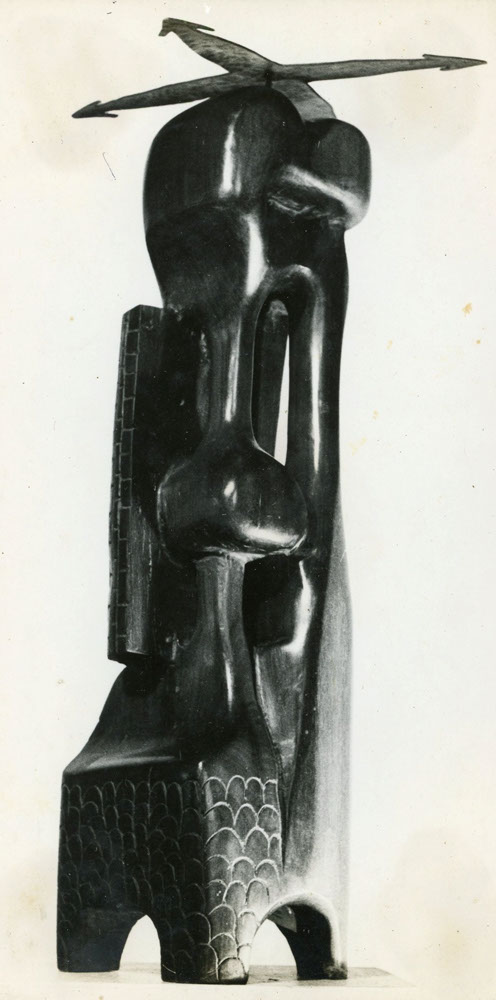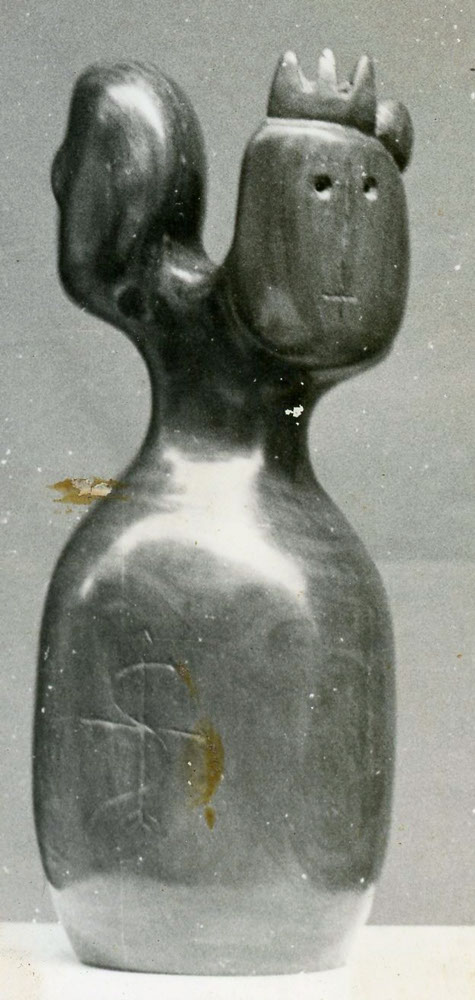(...) Ramón Haití finished his studies in painting in 1968 and in sculpture in 1969, in San Alejandro. His copious and widely dispersed work represents Cuban artistic activity in Scandinavia, Hungary, and Germany, where he won the second prize in sculp- ture in 1978. He recently won the Medal of 1300 Years since the Founding of Bulgaria. He has participated in Cuban and international exhibitions, and his work has always been received with genuine fervor. His pieces are in galleries and museums and both governmental and pri- vate collections. Who would not want such pleasant company?
Still, we need to recognize the difficult conditions in which this artist insists on his choice to cre- ate worthy and profoundly Cuban art, the presence of which trans- forms the dead word into the lan- guage of the future. Not to do it would be a real injustice. In the entryway of his house, an architectural pretext for the flickering twilight, he has his workshop, and in a small yard, a brief place of respite, is a pile of exposed logs, more than one of which has been lost. His tools, worn by much use, show no sign of the technical advances in this art... Other Cuban sculptors with very modern intentions explore what there is of Africa in Cuba. They facilitate the appearance of a newly enriching perspective on a universal phenomenon that comes from our roots. This is how we discover, with the marveled gaze of the European, something that is part of us and which surrounds us from the time we are born, first in images and then in words. Ramón Haití sifts through the dust of numerous peoples, listening to the voice that swells and entwines in the blood, without masks to wear during the festivals.
Lázara Castellanos, 1985




